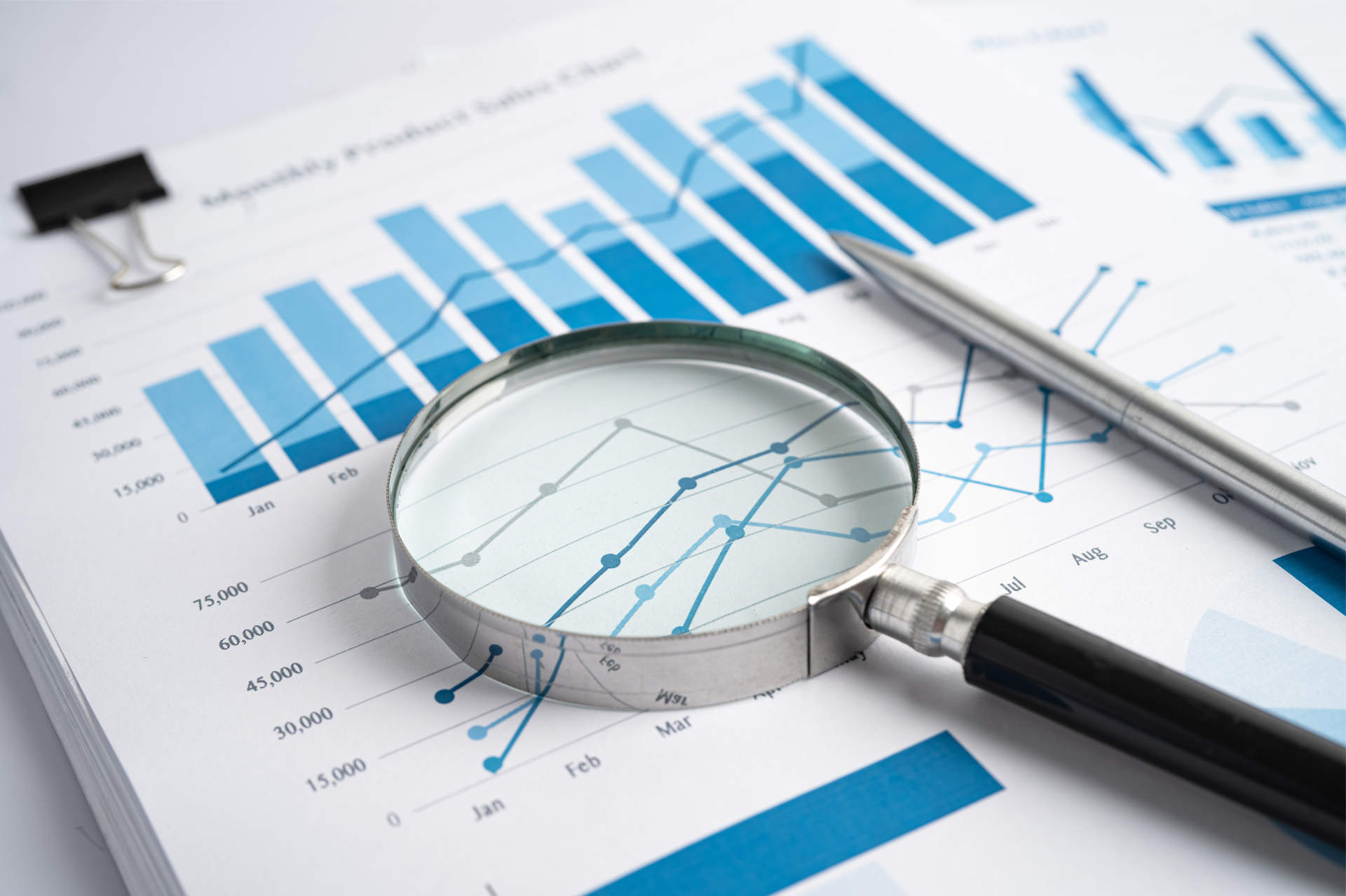Four Common Performance Management Mistakes to Avoid
Roger Knocker • December 2, 2023
Four Common Performance Management Mistakes to Avoid
A company’s ability to expand its markets, seize innovation opportunities, maintain a competitive edge, manage change, and attain ongoing growth is closely related to the firm’s ability to implement strategy successfully.
Performance management measurement is how the firm determines the success of strategy implementation and the management of performance is what enables the company to achieve its goals in time.
Companies that still rely on manual methods for performance management or software not specifically designed for such, struggle to effectively measure and manage performance. In such instances, projects can cost more than planned for or not be completed on time, and stakeholders can become rather upset because their investments don’t pay off. Indeed, if left unchecked, the company’s ability to deliver on promises and expectations can be completely undermined, and this, in turn, can lead to serious image damage. With such comes the inevitable loss of business and profits. It is a downward spiral that cannot end well.
Such scenarios don’t have to be part of your business outlook. If you invest in the correct performance management software as part of your performance management system planning, you will be able to effectively measure the operational performance of every team in the company. It is, however, essential to use the correct set of metrics to enable in-time spotting of problem area, which will make it possible to take corrective actions in a timely manner to reach the company goals.
Below are the most common mistakes to avoid in implementing a performance management system, even when you already have the right performance management software.
1. Not executing the performance management system fully Don’t blame the performance management system and the software used if a team is not performing as they should. The system is in place to measure performance. If performance is lacking, then you need to address the performance problem. Never ignore important metrics for the sake of creating a better picture of how an individual, unit or the company is performing. The necessary changes must be made to ensure better performance in line with the company’s goals.
2. Inability to customise the system to meet your company’s strategic goals One size doesn’t fit all. Have you ever bought a clothing item of which the label states that one size fits all? Although there are retailers selling such clothing items, the truth is that the clothing pieces most probably don’t fit anyone perfectly. The pieces are either too big or too small, and don’t highlight the best features of the wearers.
The same applies to anything else in life, including performance management systems. As such, you will need customisation features. This means the performance management software must be relevant to your company, and the dashboards must be designed to fit your company perfectly. This is where our expertise comes in handy. We supply you with superior quality performance management software and design dashboards specifically suited to your particular metric analysis requirements.
3. Incorrect KPIs Thousands of KPIs can be used to track the performance of individuals, teams, departments, business units and companies. But not all are relevant! As such, it is imperative to choose KPIs that are relevant and critical in measuring and improving performance at every level of your company.
As a rule of thumb, follow the approach that the KPIs selected must be specific, 100% measurable, achievable, and relevant to the specific units and for a specific period. This means that the metrics must be assigned to specific individuals, teams, units etc., to ensure that there is accountability for performance. You should not measure subjectively, which is a problem of many performance appraisal systems in place today.
Everything measured must be concrete. You need to choose realistic targets which are attainable for the group or persons who are responsible for achieving the targets.
The KPIs selected must be relevant to your company’s strategy, and finally, there must be a relevant and realistic timeframe for measurements, as well as improvement.
4. Not aligning the daily processes with the overall organisational processes Certain processes drive your company’s performance. As such, it is essential to integrate performance management into every aspect of the company, including day-to-day operations and processes. This means it is relevant to every department, whether marketing, production, delivery or recruitment. To this end, you need to select KPIs that reflect the strategic goals of the company and measure performance in a calculated manner.
You will thus measure performance on an individual, departmental and business unit level, as well as the overall company performance – all in line with the overall strategic goals of the company.
Make use of our services and products to get the expert help and the best performance management software you need for optimal measurement, ongoing improvement, and achievement of your company’s strategic performance goals.
Performance management measurement is how the firm determines the success of strategy implementation and the management of performance is what enables the company to achieve its goals in time.
Companies that still rely on manual methods for performance management or software not specifically designed for such, struggle to effectively measure and manage performance. In such instances, projects can cost more than planned for or not be completed on time, and stakeholders can become rather upset because their investments don’t pay off. Indeed, if left unchecked, the company’s ability to deliver on promises and expectations can be completely undermined, and this, in turn, can lead to serious image damage. With such comes the inevitable loss of business and profits. It is a downward spiral that cannot end well.
Such scenarios don’t have to be part of your business outlook. If you invest in the correct performance management software as part of your performance management system planning, you will be able to effectively measure the operational performance of every team in the company. It is, however, essential to use the correct set of metrics to enable in-time spotting of problem area, which will make it possible to take corrective actions in a timely manner to reach the company goals.
Below are the most common mistakes to avoid in implementing a performance management system, even when you already have the right performance management software.
1. Not executing the performance management system fully Don’t blame the performance management system and the software used if a team is not performing as they should. The system is in place to measure performance. If performance is lacking, then you need to address the performance problem. Never ignore important metrics for the sake of creating a better picture of how an individual, unit or the company is performing. The necessary changes must be made to ensure better performance in line with the company’s goals.
2. Inability to customise the system to meet your company’s strategic goals One size doesn’t fit all. Have you ever bought a clothing item of which the label states that one size fits all? Although there are retailers selling such clothing items, the truth is that the clothing pieces most probably don’t fit anyone perfectly. The pieces are either too big or too small, and don’t highlight the best features of the wearers.
The same applies to anything else in life, including performance management systems. As such, you will need customisation features. This means the performance management software must be relevant to your company, and the dashboards must be designed to fit your company perfectly. This is where our expertise comes in handy. We supply you with superior quality performance management software and design dashboards specifically suited to your particular metric analysis requirements.
3. Incorrect KPIs Thousands of KPIs can be used to track the performance of individuals, teams, departments, business units and companies. But not all are relevant! As such, it is imperative to choose KPIs that are relevant and critical in measuring and improving performance at every level of your company.
As a rule of thumb, follow the approach that the KPIs selected must be specific, 100% measurable, achievable, and relevant to the specific units and for a specific period. This means that the metrics must be assigned to specific individuals, teams, units etc., to ensure that there is accountability for performance. You should not measure subjectively, which is a problem of many performance appraisal systems in place today.
Everything measured must be concrete. You need to choose realistic targets which are attainable for the group or persons who are responsible for achieving the targets.
The KPIs selected must be relevant to your company’s strategy, and finally, there must be a relevant and realistic timeframe for measurements, as well as improvement.
4. Not aligning the daily processes with the overall organisational processes Certain processes drive your company’s performance. As such, it is essential to integrate performance management into every aspect of the company, including day-to-day operations and processes. This means it is relevant to every department, whether marketing, production, delivery or recruitment. To this end, you need to select KPIs that reflect the strategic goals of the company and measure performance in a calculated manner.
You will thus measure performance on an individual, departmental and business unit level, as well as the overall company performance – all in line with the overall strategic goals of the company.
Make use of our services and products to get the expert help and the best performance management software you need for optimal measurement, ongoing improvement, and achievement of your company’s strategic performance goals.

In the world of finance, numbers tell a story. However, that story is often buried beneath layers of spreadsheets and complex datasets. For financial professionals, the challenge is not just about understanding these numbers but also presenting them in a way that drives decision-making and inspires action. Enter data visualisation – the art of transforming data into clear, compelling visuals. Among the tools that have proven especially powerful are the line graph and the waterfall chart. These visuals help finance teams translate dry statistics into impactful narratives. In this article, we explore how these graphs can transform financial storytelling. The Importance of Data Visualisation in Finance Finance professionals are accustomed to handling vast amounts of data, from profit margins and revenue growth to expense tracking and risk assessments. Yet, presenting these figures effectively to stakeholders is a different ballgame. Visualisation simplifies this process, turning complex data sets into accessible insights. When done correctly, data visualisation: Enhances comprehension: Humans process visuals 60,000 times faster than text, making it easier for stakeholders to grasp key information quickly. Drives decision-making: Clear and compelling visuals help executives make informed decisions without wading through dense reports. Highlights trends and outliers: Visual tools can bring hidden trends and anomalies to light, prompting timely actions. Improves understanding and communication with business - Business doesn't always get what Finance is trying to communicate and good visualisations go a long way to bridging the gap. Better communication improves alignment to strategic financial goals. The line Graph: Unravelling Trends Over Time The line graph, also known as a stream graph or a stacked area graph, is a powerful tool for visualising changes in data over time. It is especially effective in showing how multiple categories contribute to an overall trend. In finance, line graphs can illustrate revenue streams, expense categories, or investment performance in a visually engaging manner. Use Case: Revenue Streams Analysis Imagine a financial report for a company with diverse revenue streams, such as product sales, services, and subscriptions. A line graph can display how each stream has evolved, highlighting peaks and troughs. The thickness of each ‘line’ represents the contribution of that revenue stream to the total, making it easy to spot which areas drive growth. Benefits of line Graphs: Trends Made Simple: Displays how multiple components evolve over time. Visual Impact: The fluid, organic design makes it easier to follow changes. Comparative Insight: Helps compare different categories intuitively. The Waterfall Chart: Bridging the Gap Between Figures Waterfall charts excel at breaking down the cumulative effect of sequential data points, making them ideal for financial analysis. They help bridge the gap between figures by showing how individual elements contribute to a total. Commonly used in profit and loss statements, budget analysis, and variance reports, these charts provide clarity in understanding how specific actions impact the bottom line. Use Case: Profit and Loss Analysis A financial analyst preparing a quarterly report might use a waterfall chart to demonstrate how various factors—like increased sales, higher marketing spend, and cost savings—impacted net profit. The chart’s structure, with its clear progression from starting figures to the final result, makes it easy for stakeholders to follow the financial narrative. Benefits of Waterfall Charts: Clarity: Simplifies complex financial data by showing individual contributions to total figures. Transparency: Clearly distinguishes between positive and negative impacts. Decision Support: Helps executives understand the key drivers of financial performance. Choosing the Right Visual for the Right Data Selecting the appropriate visual tool depends on the story you want to tell: Use line graphs for illustrating trends across multiple categories over time. Opt for waterfall charts when you need to detail the step-by-step impact of specific factors on an overall financial figure. By mastering these tools, finance professionals can enhance their storytelling, transforming raw data into insights that drive strategic decisions. Conclusion: From Data to Decisions The ability to visualise data effectively is a powerful advantage. The line graph and waterfall chart are more than just visual aids—they are essential tools for financial professionals looking to make data-driven decisions that resonate with stakeholders. By adopting these techniques, finance teams can turn numbers into narratives that not only inform but also inspire action. In the end, the power of finance lies not just in analysing data but in presenting it with impact.

